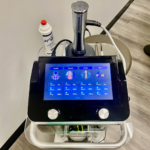building designer gold coast
Our building designer Gold Coast reflects a harmonious blend of modern aesthetics and functional excellence. Situated amidst the vibrant cityscape, our designs stand as testaments to innovation and sustainability. Each design masterpiece is meticulously crafted keeping in mind the unique coastal environment and diverse needs of our clients. From sleek residential towers that offer sweeping ocean views, to commercial spaces designed for productivity and creativity, our design embodies beauty and practicality. With a focus on incorporating cutting-edge technologies and environmentally friendly practices, We strive to create spaces that not only inspire but also contribute positively to the community and the surrounding natural beauty of the Gold Coast.
At Zeen Design, we specialize in designing a diverse range of buildings to meet the unique needs of our clients. Our expertise encompasses residential, commercial, mixed-use developments, educational institutions, and Industrial projects.
Temporary Walls NYC nyctemporarywalls.com
Our temporary wall partitions act as pieces of furniture allowing you to create an additional room which turn out as an innovative solution approved and appreciated by landlords widely in New York.
Our temporary wall partitions act as pieces of furniture allowing you to create an additional room which turn out as an innovative solution approved and appreciated by landlords widely in New York.
Digital Marketing Agency americanmarketing-solutions.com
Build a strong online presence with our innovative digital marketing services. Call today!
Build a strong online presence with our innovative digital marketing services. Call today!
Build a strong online presence with our innovative digital marketing services. Call today!
Build a strong online presence with our innovative digital marketing services. Call today!
Build a strong online presence with our innovative digital marketing services. Call today!
Temporary Walls Expert NYC 1daywallnyc.com
A temporary wall is all done using pressure and does not require any nails or holes drilled into the floor or the ceiling.
A temporary wall is all done using pressure and does not require any nails or holes drilled into the floor or the ceiling.
A temporary wall is all done using pressure and does not require any nails or holes drilled into the floor or the ceiling.
Passaic County NJ reviveorthopedicsandwellnessnj.com
Offering chiropractic adjustments, orthopedics treatment, Physical therapy, epidural injections, pain management, HRT, IV infusion in Bergen & Passaic County NJ
Offering chiropractic adjustments, orthopedics treatment, Physical therapy, epidural injections, pain management, HRT, IV infusion in Bergen & Passaic County NJ
Reformer Pilates Bergen County NJ rebelxlstudios.com
Rebelxl Pilates studio includes full body athletic reformer flows that help to build strength, stability, and coordination, accompanied by heart-pumping music in a club-like atmosphere.
Rebelxl Pilates studio includes full body athletic reformer flows that help to build strength, stability, and coordination, accompanied by heart-pumping music in a club-like atmosphere.
Temporary Wall Company 1daywall.com
1daywall is an innovative temporary wall company in New York City that specializes in installation of temporary walls to maximize living and office spaces.
1daywall is an innovative temporary wall company in New York City that specializes in installation of temporary walls to maximize living and office spaces.
1daywall is an innovative temporary wall company in New York City that specializes in installation of temporary walls to maximize living and office spaces.
Best Abinitio Online Training Institute in Hyderabad
Ab Initio Online Training
One of the top providers of online IT training worldwide is VISWA Online Trainings. To assist beginners and working professionals in achieving their career objectives and taking advantage of our best services, we provide a wide range of courses and online training.
The very foundation of your future profession in Abinitio Online Course from India is a quality training programmer, and Viswa Online Trainings is aware of the requirement for both of these components. For both novices and experts, our Best Ab Initio Training from Hyderabad offers comprehensive Abinitio Online Training information. You may quickly clear your doubts and receive the precise assistance that is required from Abinitio Online Training In Hyderabad thanks to the availability of knowledgeable trainers and instructor-led training sessions.
Key Features:
Flexible Timings
Certified & Industry Experts Trainers
Customize Course
24/7 Support
Hands-On Experience
Best Practices / Example Case Studies
Real Time Use Cases
Job Assistance with Trainers
Lab Facilities
Video class recordings
So, let’s get started with us!
Register here For Free Demo >>
Related offered courses: SQL, Informatica, Tableau, Power BI, UNIX, Hadoop…. etc.
Feel free to get in touch with us for further discussions and pricing details. Here are our contact details:
VISWA Online Trainings
INDIA: +91 9493999586
Email: viswaonlinetrainings@gmail.com
Website: https://viswaonlinetrainings.com/
Comprehensive Fire Extinguisher Service in Sydney
Majestic Fire Protection offers reliable and comprehensive fire extinguisher service in Sydney, ensuring adherence to the Australian Standard AS 1851. They understand the varying service needs based on the type and location of extinguishers, offering tailored solutions whether you own a dry powder, carbon dioxide, or other types of fire extinguishers. Visit https://www.majesticfire.com.au/fire-extinguisher-maintenance-services/ for more.
Masters in Animation & VFX | Post Graduate Courses Ahmedabad
Gujarat University (GU) – Masters in Animation & VFX, Game Design & Development, Network Security, Post Graduate Courses, Fees, Admission Open in Ahmedabad.By identifying promising sectors and putting together potent syllabi, University has started this department in 2010 with a roster of full-time courses in association with India’s best-known industry experts that equip the student with the skills that tomorrow’s industry is crying for today.All our Courses like IT-Infrastructure Management Services (IMS), Mobile Application Development, Cloud Technology, Information Security, Graphic Design & Animation are prepared by industry professionals.






